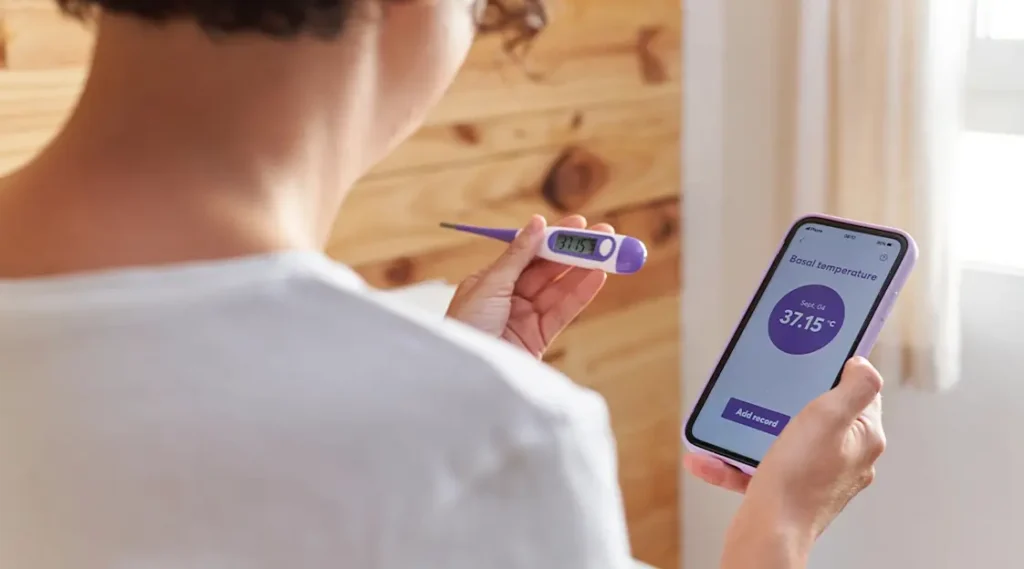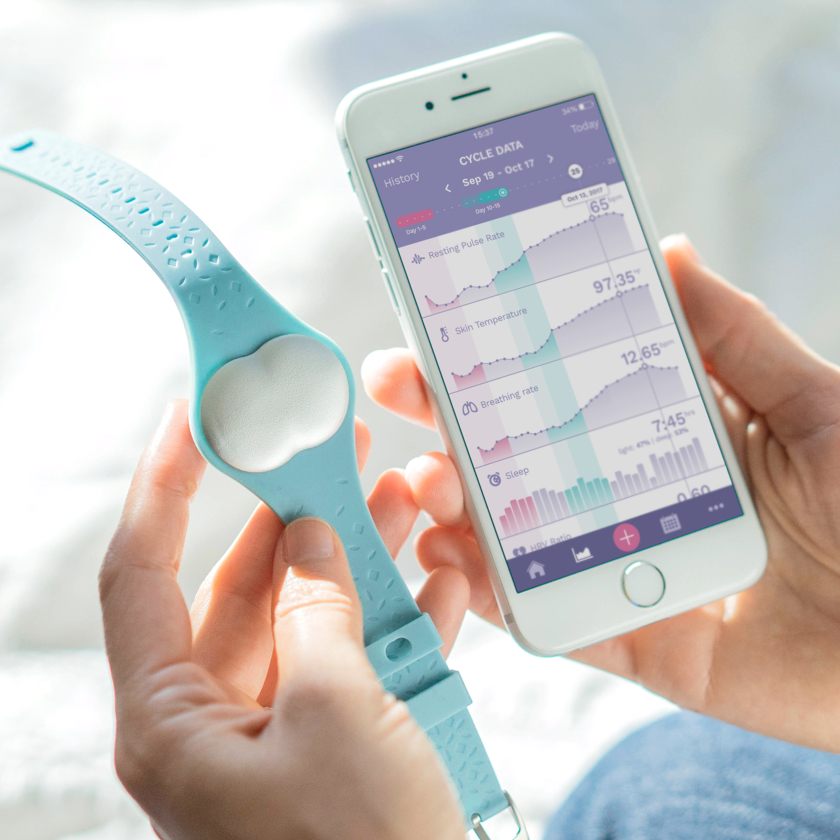Fertility trackers are becoming increasingly popular as an alternative method for individuals looking to avoid pregnancy without relying on hormonal or barrier contraceptives. These devices and apps help users monitor their menstrual cycles, track ovulation, and identify fertile windows, which can assist in making informed decisions about when to engage in or avoid sexual activity. Whether you’re trying to conceive or prevent pregnancy, understanding how to use a fertility tracker effectively can be key.
Recommended: Does Family Planning Affect Future Pregnancy?
In this blog, we will explore the best fertility trackers available to help you avoid pregnancy, discuss their accuracy, and offer tips on how to make them work for your specific needs.
What is a Fertility Tracker?
A fertility tracker is a tool, often available as an app, device, or wearable, designed to assist individuals in tracking their menstrual cycle, ovulation, and fertility windows. These trackers utilize a variety of methods to monitor and analyze natural bodily rhythms, including temperature fluctuations, cervical mucus patterns, and hormone levels, to estimate when a person is most fertile.

By identifying these critical fertility indicators, a fertility tracker can aid in pregnancy prevention by helping users avoid intercourse during high fertility periods. These trackers offer a natural family planning option and can also boost the likelihood of conception. Serving as a non-hormonal alternative to birth control, fertility trackers provide users with more autonomy and control over their reproductive health.
Recommended: Top 10 Myths and Misconceptions of Family Planning
How Fertility Trackers Help in Avoiding Pregnancy
Fertility trackers play a crucial role in helping individuals avoid pregnancy by monitoring various fertility indicators throughout the menstrual cycle. These trackers analyze patterns such as temperature shifts, changes in cervical mucus, and hormone levels to predict ovulation and identify fertile windows. By pinpointing the times when a person is most likely to conceive, fertility trackers enable users to avoid sexual activity during those high-fertility periods or use backup contraception if needed.
The primary method fertility trackers use to help avoid pregnancy is the awareness of ovulation. Ovulation typically occurs around the middle of the menstrual cycle, and this is when the body is most fertile. By identifying this window, users can time their sexual activity accordingly, reducing the chances of pregnancy without relying on hormonal birth control.
Recommended: Can Contraceptive Implant Cause Infertility?
Some advanced fertility trackers even provide real-time data and notifications, helping users track and understand their fertility with greater accuracy. Overall, fertility trackers provide a natural, hormone-free approach to family planning, empowering individuals to make informed decisions about when to engage in sexual activity and when to avoid it for pregnancy prevention.
Top Features to Look for in a Fertility Tracker
When selecting a fertility tracker, there are several key features to consider to ensure it aligns with your needs and provides reliable data for effective family planning. Here are some of the top features to look for:
- Accurate Ovulation Prediction: One of the most important features of a fertility tracker is its ability to predict ovulation with high accuracy. Look for trackers that analyze multiple fertility signs, such as basal body temperature, cervical mucus, and hormone levels, to provide precise ovulation predictions.
- Ease of Use: The tracker should be user-friendly, with an intuitive interface that allows easy data input and tracking. Whether it’s an app or a wearable device, the setup and daily use should be simple and convenient.
- Real-Time Data and Notifications: The ability to receive real-time updates about your fertility status is crucial. Many trackers offer notifications or alerts, such as when you’re approaching or in your fertile window, which can be helpful for avoiding pregnancy or planning conception.
- Data Storage and Analysis: A good fertility tracker should store your data over time, allowing you to analyze patterns and trends in your cycle. This helps you understand your body’s rhythms and make informed decisions. Some trackers even offer charts or graphs that visually display your cycle history.
- Multiple Fertility Markers: To increase the accuracy of predictions, look for trackers that monitor more than one fertility indicator. Features like tracking basal body temperature, cervical mucus consistency, hormone levels, and even heart rate can help provide a more comprehensive view of your fertility cycle.
- Long Battery Life: If using a wearable tracker, it’s important that it has a long-lasting battery, so you don’t have to constantly recharge it. Look for devices with extended battery life for convenience.
- Syncing and Integration: A good fertility tracker should sync with your phone or other devices, enabling easy access to your data at all times. Many apps allow integration with other health and fitness apps, providing a more holistic view of your health.
- Discreet and Comfortable: Whether you’re using an app or a physical device, it should be comfortable and discreet enough for daily use. If you choose a wearable device, consider comfort, especially if it’s something you’ll wear throughout the day or night.
- Privacy and Security: Since fertility trackers deal with personal health data, it’s important that the tracker or app you choose has strong privacy and security measures in place to protect your information.
- Cost-Effective: Fertility trackers vary in price, and while some offer advanced features, others may be more affordable with basic functionality. Consider your budget and the features that matter most to you when making a decision.

Recommended: Can Birth Control Cause Extreme Fatigue?
Best Fertility Trackers to Avoid Pregnancy in 2025
Here are some of the best fertility trackers to help avoid pregnancy in 2025, based on their accuracy, ease of use, and reliable features:
1. Natural Cycles
Natural Cycles is one of the most popular and scientifically-backed fertility trackers available today. It uses a thermometer to track your basal body temperature (BBT) and provides a daily fertility status. The app analyzes your BBT and menstrual cycle to predict your fertile and non-fertile windows accurately. It’s a great choice for those looking for a natural family planning method and is FDA-approved as a birth control method.
- Key Features: FDA-cleared, temperature-based tracking, app notifications, personalized cycle predictions, and an easy-to-read calendar.
- Pros: Highly accurate, great for women with regular cycles.
- Cons: Requires daily temperature measurements, which some users may find inconvenient.
2. OvuSense
OvuSense is another top fertility tracker that focuses on continuous, real-time monitoring of your cycle. It uses a clinically proven sensor to track your core body temperature and automatically syncs with the OvuSense app. This tracker provides highly accurate fertility predictions and helps in avoiding pregnancy by indicating fertile and infertile days based on your cycle.
- Key Features: Continuous temperature monitoring, real-time ovulation prediction, app synchronization, and detailed cycle insights.
- Pros: Reliable and precise, especially for women with irregular cycles.
- Cons: The device is a bit bulky, and some users might find the setup process a little complex.
Recommended: Creighton Method of Natural Family Planning
3. Tempdrop
Tempdrop is a wearable fertility tracker that records your basal body temperature (BBT) while you sleep. It syncs with the Tempdrop app to track your cycle and predict ovulation with high accuracy. The device is non-invasive and comfortable to wear overnight, making it easier to track BBT consistently.
- Key Features: Sleep-based temperature tracking, synchronization with the Tempdrop app, and customizable cycle data.
- Pros: Comfortable to wear while sleeping, accurate BBT data.
- Cons: It doesn’t track other fertility signs like cervical mucus or hormone levels.
4. Clue
Clue is a well-known fertility tracking app that is great for women looking for a straightforward, easy-to-use tool to track their menstrual cycle. The app uses a variety of fertility markers, including period, cervical mucus, and mood tracking, to predict fertile and non-fertile windows.
- Key Features: Cycle predictions, period tracking, mood and symptom tracking, and integration with wearables like Fitbit and Apple Health.
- Pros: Simple to use, no need for external devices, and great for beginners.
- Cons: Less accurate than other options for avoiding pregnancy, as it does not track BBT or hormones.
5. Livia
Livia is a device designed to relieve menstrual cramps but can also be used as a fertility tracker. By syncing it with the Livia app, you can track your cycle, manage symptoms, and predict ovulation. While it doesn’t directly track fertility markers, it can help with identifying periods of your cycle when you’re most fertile.
- Key Features: Pain relief, symptom tracking, cycle monitoring, and notifications.
- Pros: Dual purpose (pain relief and fertility tracking).
- Cons: Less specific for fertility tracking compared to other trackers.
Recommended: Family Planning Options for Couples Over 35
6. Fertility Friend
Fertility Friend is an app that has been trusted by many for tracking cycles, ovulation, and fertility. It combines BBT tracking with cervical mucus observation to help predict fertility. Fertility Friend also includes a premium version with additional features for more accurate cycle tracking and predictions.
- Key Features: BBT tracking, cervical mucus tracking, personalized fertility charts, and cycle predictions.
- Pros: Comprehensive charting, educational resources for users.
- Cons: Requires manual entry of data, can be time-consuming.
7. Ava Bracelet

Ava is a smart bracelet that tracks multiple parameters related to fertility. It records data such as heart rate, skin temperature, and respiration rate during sleep, and uses this data to provide insights into your fertility status. Ava is a great option for women who want a hands-free solution to fertility tracking.
- Key Features: Multi-parameter tracking, automatic sync to the Ava app, and cycle prediction.
- Pros: Non-invasive, tracks a wide range of data, and provides insights on fertility.
- Cons: Expensive compared to other trackers and may not be ideal for women with irregular cycles.
8. Kindara
Kindara is an app that focuses on tracking fertility through BBT and cervical mucus observation. It offers a more natural approach to cycle tracking and can be used to predict ovulation for both avoiding pregnancy and trying to conceive. Kindara also integrates with the Wink thermometer for more accurate BBT tracking.
- Key Features: BBT and cervical mucus tracking, customizable fertility charts, and syncing with Wink thermometer.
- Pros: Easy to use, useful for those trying to conceive or avoid pregnancy.
- Cons: The Wink thermometer requires a separate purchase.
Recommended: How To Prepare Financially And Emotionally For Family Planning
How to Use a Fertility Tracker for Family Planning
Using a fertility tracker for family planning requires consistency, accuracy, and an understanding of your menstrual cycle. Whether you’re avoiding pregnancy or trying to conceive, here’s how to use a fertility tracker effectively:
- Choose the Right Tracker: Select a fertility tracker that suits your needs—apps, wearable devices, or basal body temperature (BBT) thermometers. Some advanced trackers also monitor hormone levels.
- Track Your Menstrual Cycle: Record the start and end dates of your period to identify patterns and estimate ovulation. Most trackers use this data to predict fertile and non-fertile days.
- Monitor Ovulation Signs: Many fertility trackers analyze changes in basal body temperature, cervical mucus consistency, and hormone levels to determine ovulation. Recording these signs increases accuracy.
- Follow the Safe Window: If avoiding pregnancy, abstain from unprotected intercourse during your fertile window (usually 5-7 days around ovulation). If trying to conceive, this is the best time to have intercourse.
- Stay Consistent: Regular tracking is essential for reliable predictions. Irregular tracking or missing data can lead to miscalculations and reduce effectiveness.
- Combine with Other Methods: For better protection against pregnancy, fertility tracking can be combined with barrier methods like condoms or lifestyle changes such as abstinence during fertile days.
Recommended: How To Choose The Right Birth Control Method For You
By following these steps, fertility trackers can serve as a helpful tool in natural family planning, giving you more control over your reproductive health.
Conclusion
Fertility trackers offer a natural, hormone-free way to monitor reproductive health and plan pregnancy or avoid it. By tracking menstrual cycles, ovulation signs, and hormonal changes, these tools help individuals make informed decisions about their fertility. While they can be highly effective when used correctly and consistently, their accuracy depends on various factors, including cycle regularity and adherence to tracking methods. For those seeking a non-invasive alternative to traditional birth control, fertility trackers provide greater body awareness and control. However, combining them with other contraceptive methods can further enhance effectiveness for those avoiding pregnancy.